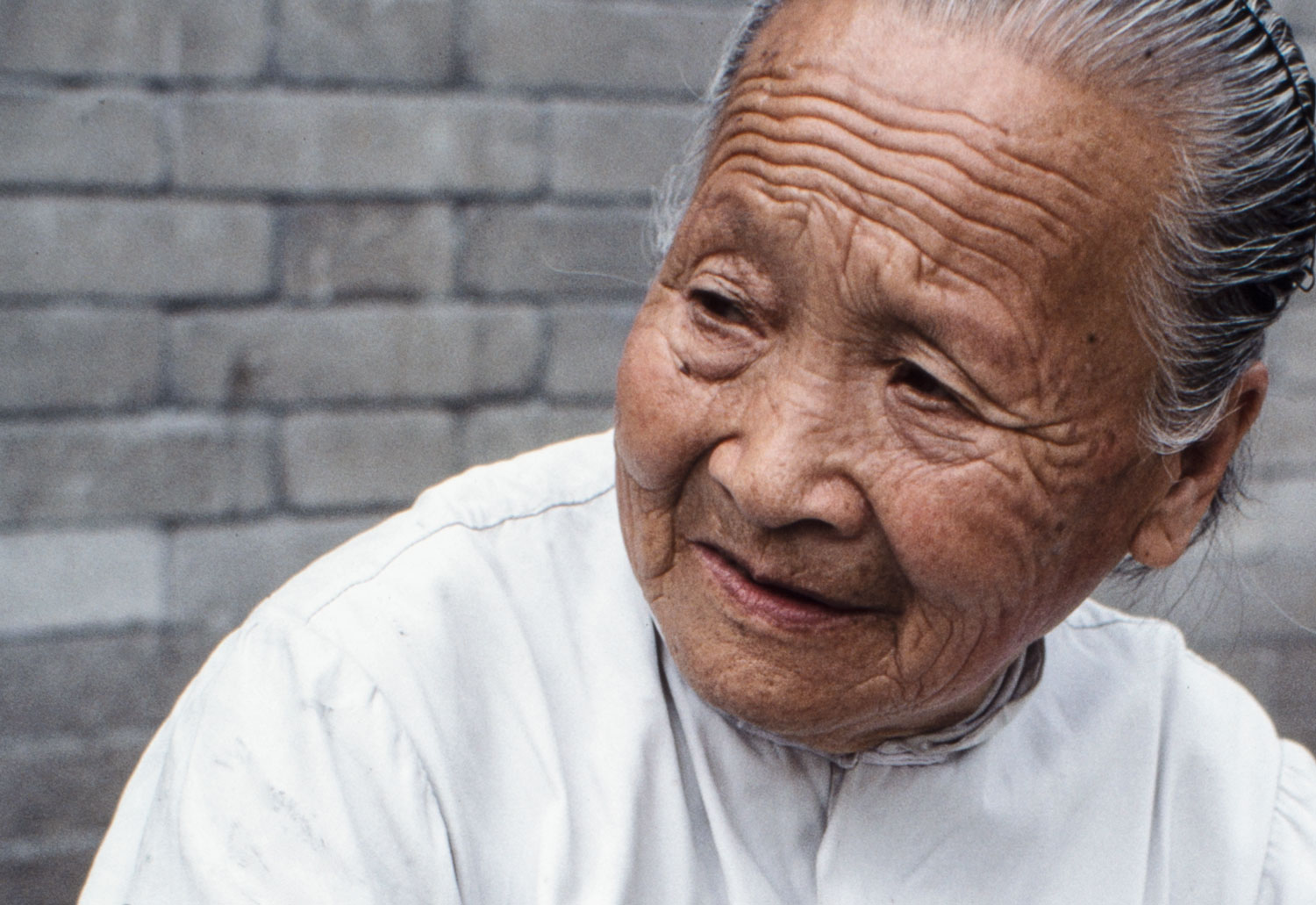Elderly in China
Photos by Forrest Anderson
As a young foreign correspondent in Beijing, China, one of my first news stories was about a trade fair selling products for the elderly. There were rows of tiny embroidered shoes for elderly women whose feet had been bound when they were children, cunningly carved bamboo canes, traditional Chinese style clothing that only the elderly were wont to wear in a country obsessed by jeans, and special chairs for the elderly to tote to public bathrooms in their neighborhoods and position over squat toilets.
In a culture where many homes were multi-generational and most of China’s top leaders at the time were in their 70s and 80s, the elderly were a vibrant part of public life. Many of them had been imprisoned or sent to labor camps and rural areas during the Mao era. They were determined to make up for this lost time.Those in government were reversing past ruinous policies and trying to stimulate the economy. Elderly scholars taught, reviving universities, tackling new research and pumping out books. Elderly businessmen headed up large companies, reforming and bringing them into the modern world.
The unsung heroes of the Mao era had been grandmothers who had raised children while parents were sent to far off places. Many of these women were illiterate and hobbled around on bound feet, but they were the backbone of China who hd kept families functioning during the turbulent Mao period. This tradition continued post-Mao with grandparents as the primary caregivers for children while parents worked.

Elderly people ran shops or market stands. They shopped in the markets, exercised or played traditional musical instruments and Chinese chess with friends in the parks, or took their caged birds to outdoor bird markets. The elderly were integrated deeply into ordinary daily life. Living in traditional courtyard neighborhoods, they had strong networks of friends and relatives.
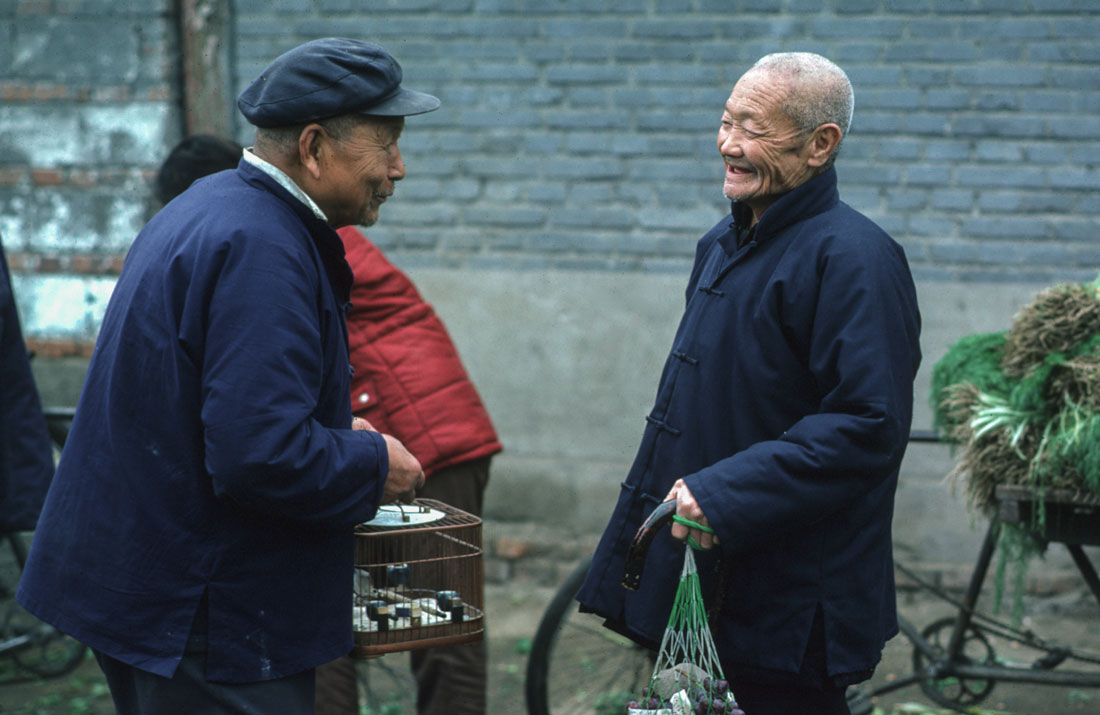
China’s traditional respect for the elderly had taken a hit during the Mao era when traditional culture and values were denigrated, but it rebounded quickly afterward. Respect for elders has been a core value of Chinese society for thousands of years, with the elderly honored for their wisdom and skills even as their physical abilities declined. Children were expected to care for the elderly, especially in rural areas where pensions were not universal.
In the 1990s, China was young. Just 5.6-7 percent of the population was 65 and over, so care for the elderly was generally manageable and the elderly returned the favor by doing many household tasks and contributing pension funds to households.
Since then, China has aged dramatically until 18.7 percent of the population was 60 or older in 2020. That is a quarter of a billion elderly, the world’s largest elderly population. The working-age population of China has fallen to 63.3 percent from 70.1 percent a decade earlier.
The factors creating this sea change are global, with the exception of Africa. Populations of most of Asia, Europe and the Americas are aging because of a concurrent decline in fertility and mortality rates. However, the ageing of China’s population is the most dramatic and could have the greatest global consequences for a number of reasons.
How did China get here?
Mao Zedong, following Soviet policies, encouraged Chinese to have large families with the result that the fertility rate was six children per woman in the 1950s-60s. This turned into a population boom so massive that it threatened to sink China’s economy. Life became one big cradle-to-grave crowd, where housing was in such short supply that family members had to sleep in shifts, essential goods were insufficient and newborn babies were lined up in long rows in overflowing maternity hospital nurseries. When asked what the main problem with almost any public policy was, overwhelmed government officials inevitably responded with the Chinese word “renkou,” which means “population” but literally translates as “people’s mouths.”
Panicked officials, who were attempting desperately to stimulate the economy and saw a demographic apocalypse in the offing if the birth rate continued unabated, slapped an unprecedently draconian population control policy on China that limited each family to one child.
Baby quotas were imposed and couples had to apply to have a child, women had to report monthly cycles to their work unit, and work units passed out birth control. Millions of pregnant women were forced to have abortions. Others elected to do so when they found out their unborn child was female because of a strong bias in favor of male babies in a culture where males were expected to support their parents in their old age.
China’s fertility rate predictably plummeted, with most children being raised as only children surrounded by doting, demanding parents and four grandparents. These children grew up with high expectations for education and career success but less incentive to have their own children.
In 2015, seeing a new form of apocalypse in the country’s rapid aging, China’s government relaxed the policy and allowed couples to have two children. There was an initial small bump in the number of babies born the next year, but in 2017, the birth rate fell to 17.2 million babies, far below the official forecast of more than 20 million. Although the population restrictions were further lifted last May to allow families to have three children, many Chinese women are not interested. The result is one of the world’s lowest fertility rates - 1.3 children per woman today. It now is expected that the effect of relaxing the one-child policy will not be significant for two decades.
While the fertility rate dropped, the mortality rate fell from 22.2 to 7.1 per 1,000 people from 1950 to 2020 because health care and living conditions improved. Life expectancy rose from 44.6 to 77.47 years and is expected to reach about 80 years in 2050. It is already there in many cities. By 2018, China had almost 250 million people over 60 years old, 17.9 percent of the population. The proportion of elderly was slightly higher in the countryside than in the city because many young rural people migrate to the cities for employment.
The baby boomers born in the 1950s and 1960s are now elderly. The number and proportion of people over age 80 is by far the fastest growing age group and they have a falling mortality rate. They are healthier and have less difficulty performing daily activities than previous generations.
By 2050, some 30 percent of Chinese adults are expected to be 65 or older, a higher proportion than Japan’s notoriously elderly population.
Economic Consequences
This demographic trend will mean that the proportion of working age Chinese will decrease until fewer than two Chinese taxpayers may have to care for each retiree – as many as 500 million people. When a third of China’s population are retirees, their living and health care expenses will consume about a quarter of the country’s GDP. The government-run basic pension system for corporate employees is expected to be depleted by 2035, a 2019 Chinese Academy of Social Sciences report indicated.
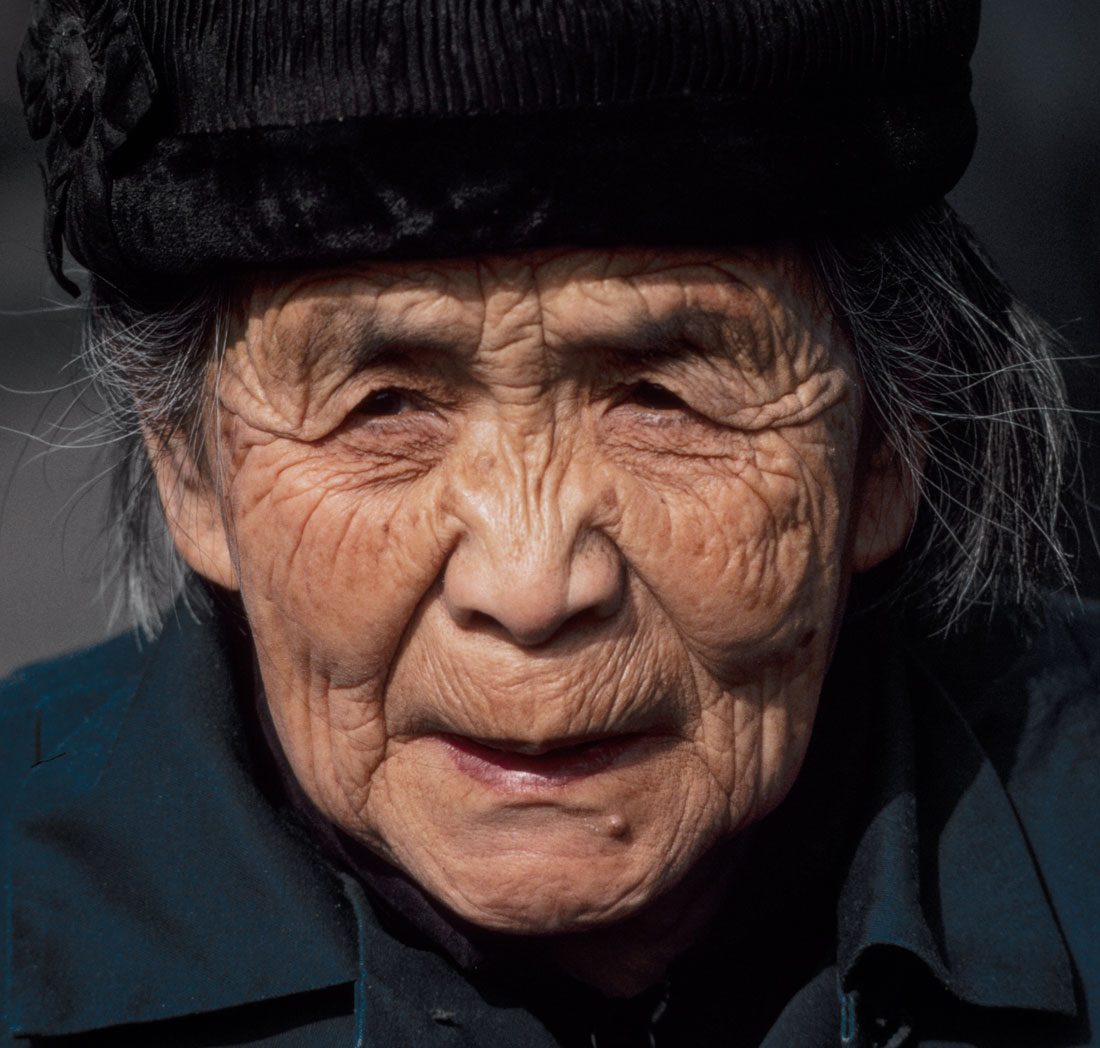
The trend could be catastrophic for the promise of continued prosperity that underpins the ruling Communist Party’s claim to legitimacy, as it could dramatically slow economic growth at the same time that China already has implemented most of the large productivity gains that come with its people becoming more urban and educated and adopting more efficient manufacturing technologies. China’s age of dramatic economic growth is over.
The United Nations and World Health Organization define an aging society as one in which at least 7 percent of the population is over 65. An aged society is one in which that percentage reaches 15 percent. A super aged one is one in which more than 20 percent of the population is over 65. China is now an aged society, heading toward super aging.
A 2014 Deloitte study indicated that developed countries generally don’t become aging socieities until they have an average gross domestic product of $10,000 per person. However, China passed that mark with an average GDP of just $5,416 per person. As a result, the shortage in China’s pension fund will reach $1.4 trillion by 2050.
China’s population is expected to peak at 1.44 billion in 2029 before entering an unstoppable decline in which it will return to mid-1990s level by 2065. This will mean less domestic consumption which will slow economic growth dramatically.
China has entered into a dreaded “middle income trap,” in which a rapidly developing economy stagnates as incomes reach a median level and the emerging middle class starts having fewer babies.
It will require a substantial increase in labor productivity for China to sustain its current growth rate as its population ages. China's total working-age population between 15 and 64 is dropping by tens of millions annually.
This is a worldwide pattern that will result in the global population peaking at 9 billion in about 2090 and then declining. Japan’s current population of 127 million will shrink to 83 million by 2100, the United Nations has said, and more than a third of its population will be over 65 at that time.
But China’s economic power has been built on labor-intensive manufacturing that has not provided a social safety net for the elderly, so it is not well prepared to handle the demographic shift. Demographers say the country will get old before it becomes rich. There will be fewer young taxpayers to prop up an older generation that is living longer than ever before, and less than 3 percent of those have a pension paid by a private employer. This means that their care will fall to their smaller number of descendants and to the state.
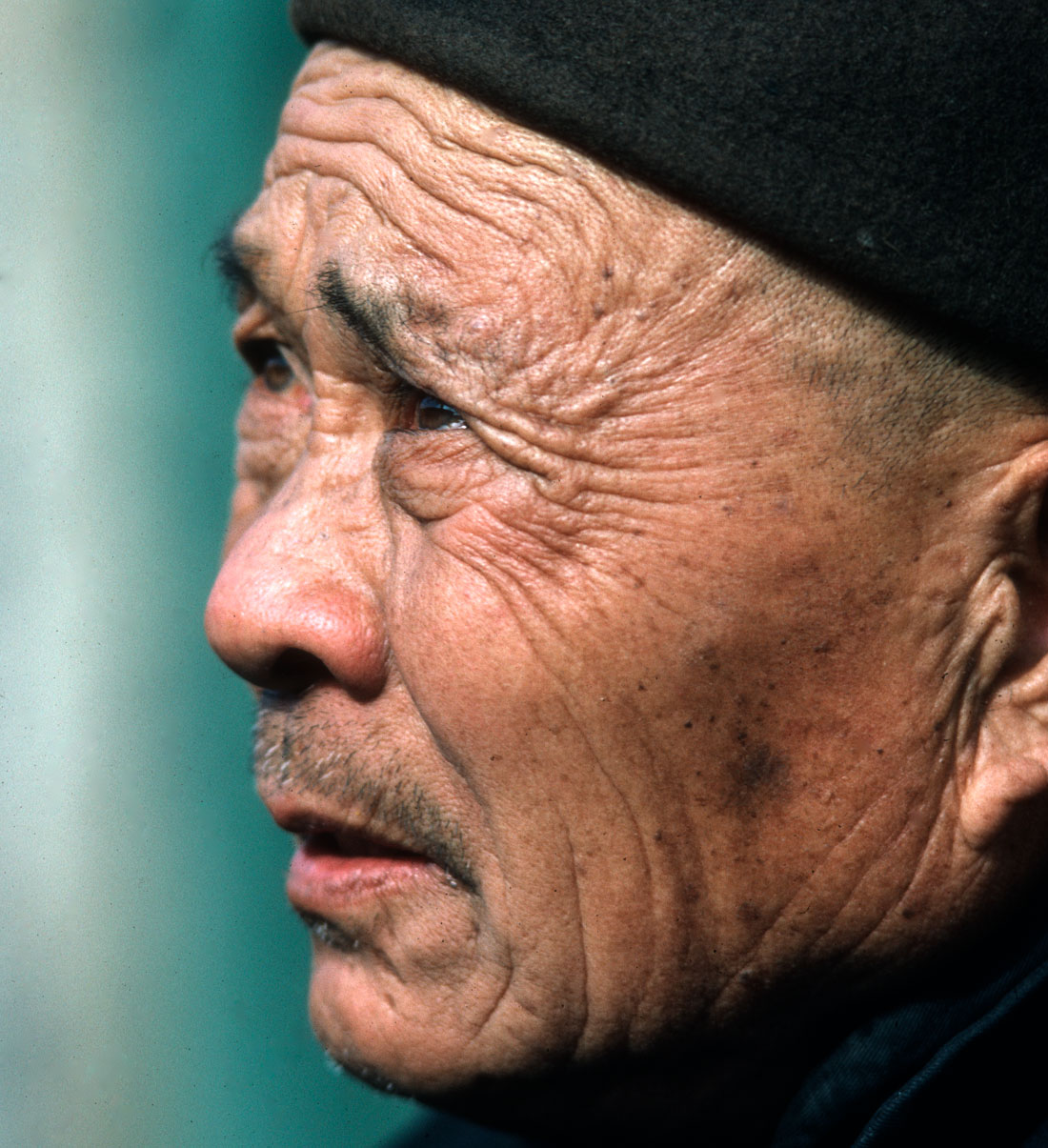
Although fertility in rural China is much higher than in urban areas, aging problems will be more serious in rural areas because they are less prosperous and young people migrate to the cities to find work. That means that the proportion of elderly will be higher in rural areas than in urban areas, with few of them living with their children. In the 1990s, some 70 percent of elderly lived with their children. Traditional Chinese behavior codes dictated that young people cared for older people, deferred to them, let them speak first and did not contradict them. In return, the elderly cared for grandchildren and did other household tasks for their working adult children.
Chinese history is full of stories in which children demonstrated extreme filial piety to their parents. The classic text used for six centuries to teach the importance of respecting one’s parents has been “The 24 Paragons of Filial Piety,” a collection of folk tales written by Guo Jujing. A new version was issued in 2012 that added modern admonitions such as that children should buy health insurance for their parents, teach them to use the Internet, throw birthday parties for them and take other measures to make sure they are happy.
However, the one-child generation is less likely to support their parents in old age. About 70 percent of elderly today live in separate households from their adult children in some major cities. Just as the needs of the elderly are growing, migration, shrinking family size, and a declining sense of filial duty are eroding the traditional family support system for the elderly.
Adult children still are the main safety net for many aging parents, and China’s constitution stipulates that parental care is adult children’s legal responsibility.
So what is China to do?
China’s government has formulated a policy that includes 90 percent of elderly remaining at home with family, community and technology support services and the remaining 10 percent being in some version of community or institutional care program, with only three percent being in a nursing home.
The main features of this approach and the challenges are:
Training of caregivers to care for the elderly and setting up a national network to do so. A National Center for Gerontology was established and tasked with scientific research, clinical care, rehabilitation services, public health policies and health management for the elderly. Based at Beijing Hospital in the nation’s capital and networked with more than 60 medical institutions across the country, the center is responsible for developing national strategies, prevention and control of ageing-related health problems, promoting the health of older people in remote areas and international exchange of knowledge and ideas in the area of ageing.
With the COVID-19 pandemic, the center has developed online courses to train professionals. It has provided more than 1,600 training courses for medical personnel, with those in underdeveloped areas having free access to them. However, the training of caregivers has not gone as quickly as hoped. China planned to train six million caregivers by 2020. By 2017, however, just 300,000 had been trained and the latest goal is for two million to be trained by 2022.
The state has gradually improved a social security system for the elderly and health insurance coverage. China’s pension spending is growing at a rate of 15 percent per year. By 2011, some 93 percent of Chinese adults age 45 or older had health insurance, but middle-aged and older adults were less likely to have insurance. The country still needs to improve old-age insurance, basic medical insurance systems and develop a long-term care system for older people with disabilities as well as a better pension system.
About 41 percent of older adults live with an adult child and another 34 percent have an adult child living nearby. The state policy is to promote that family involvement. However, there is a recognition that the availability of family caregivers will shrink and community-based services could help fill the gap by providing older adults with services while they stay in their own homes. These services include neighborhood cafeterias where the elderly can get daily low-cost meals, gyms adapted for elderly needs, entertainment facilities where the elderly can interact, and neighborhood medical facilities. The government provides tax cuts and utility bill deductions for these “nursing homes without walls”, which are being built by the hundreds in cities so that elderly people can get to them in minutes. In Shanghai, elderly who remain at home are being helped to add easy-to-operate and protective appliances. Elevators are being installed in old residential buildings to make it easier for the elderly to get around. Some cities are building apartment buildings to provide free housing for childless and ill elderly people. The buildings have systems whereby medical teams from local hospitals coordinate with the community to provide services, including remote video consultation to respond to medical problems.
The state and IT industry are throwing technology at the issue by integrating smart technology, the Internet of Things and mobile devices to collect medical and home environment data and connecting the elderly with family, community medical facilities, home care services and other services to meet their needs. This industry has grown rapidly since 2015, when China’s State Council published guidelines for developing it, but it is still in its infancy. Because some of the products are relatively expensive, there is a gap between their cost and the conservative consumption of most elders. Some products are not well integrated with the community and needs of the elderly yet. Some require training for the elderly to use them. Setting up such a system will require integration of IT, medical treatment, health and elderly industries.
The state is allowing older adults to move to cities with their children.
There is sentiment in favor of redefining the term “elderly, ” and many in that age group are doing so on their own. When China’s retirement age was set in the 1950s at 55 for women and 60 for men, people didn’t live as long and were not as healthy as they are now. Retirement at those ages was mandatory partly because China had high unemployment amid population growth, and retirements opened the way for younger people to fill work slots. This eventually gave rise to huge pension burdens on state-run factories and offices as life spans increased and some people collected retirement pensions for 40 years or more. There is widespread sentiment that the retirement age should be raised and some younger elderly should be retrained in technology to reenter the workforce, a view that also has gained traction in other countries. A recent study of adults ages 50 and older indicated that at age 50, Chinese can expect to live 24-26 years without activity limitations, especially in urban areas. Many Chinese continue to live vigorous lives after retirement, traveling widely, working out and remaining healthy well into their late 70s. They dance, play soccer and join clubs. They spent some 567 billion U.S. dollars in 2020, according to a report by the China National Committee on Aging. Called the silver economy, this market segment is large. Demographers predict that people considered elderly today will be seen as younger and will act younger in the future.
The spread of digital technology has brought a shift in senior citizens' consumption patterns, with more switching to online shopping. Seniors showed greater enthusiasm for buying smartphones, smartwatches and SLR cameras online than those between 45 and 60, a report from online retail platform Suning.com indicated.
China is experimenting with hiring younger seniors to help care for older ones and paying them in services that they can redeem in the future when they need them. This idea has been implemented in Japan, the United States and the United Kingdom with mixed results. Younger seniors in Shanghai, where one in four citizens is 60 or older, provide companionship for elderly people, pay bills and shop for groceries for them. They help older seniors use exercise equipment and learn to use bathroom and kitchen accessories designed for the elderly. Some of these time banks have mini-apps that members can use to advertise the services they need, rate the quality of services, or take orders to provide service.
Economic prosperity has brought rising obesity rates along with widespread smoking among China’s aging population. About a third of Chinese 45 or older are overweight, and thus at higher risk of heart disorders, hypertension, diabetes and stroke. Over half of men ages 45 and older smoke. High air pollution poses additional health risks. The aging population has increased the incidence and types of chronic diseases - cardiovascular diseases, cancer, respiratory diseases, and diabetes. There are nearly 300 million chronic patients in China, half of whom are over 65 years old. Among adults aged 35–84, a 64% increase in chronic heart disease occurrences is predicted between 2020 and 2029. To cope, China will be forced to come to terms with the changes in diet that have come with prosperity as well as the high tolerance of smoking and pollution. Multiple studies indicate that pollution also has been a factor lowering the fertility of young men in China.
Although nursing homes are expected to be available to a relative few, foreign and private investors are allowed to open privately-owned nursing homes and many have been built as the industry has developed. Chinese used to shun institutional care for their elderly parents for fear of being called unfilial, but this is changing. Many nursing homes are upscale facilities with medical services and hospitals in the same compound. Other more affordable one are close to community hospitals.
Chinese women, who were once forced into factories and offices to help “hold up half the sky,” are now being exhorted to have children as a patriotic duty and not to delay marriage for their career. Abortions, once widely available and promoted, are now starting to be controlled. Women are not convinced. Raising children in China is high pressure because parents are expected to make sure that their child gets every possible opportunity for an education and good career in a highly competitive work environment. Morover, young Chinese who already face supporting two parents and four grandparents, an oppressive upside-down pyramid called “4-2-1,” are not eager to add children to support.
Parents often pressure young people to marry well and arrange marriages for them, which sends many children fleeing in the opposite direction. Marriage registrations have declined since 2013, while the number of divorces has climbed since 2006. Many middle-class Chinese no longer see marriage as the only path to security and prioritize careers over a traditional family life. China’s Singles’ Day on Nov. 11 is typically the biggest shopping day in the world.
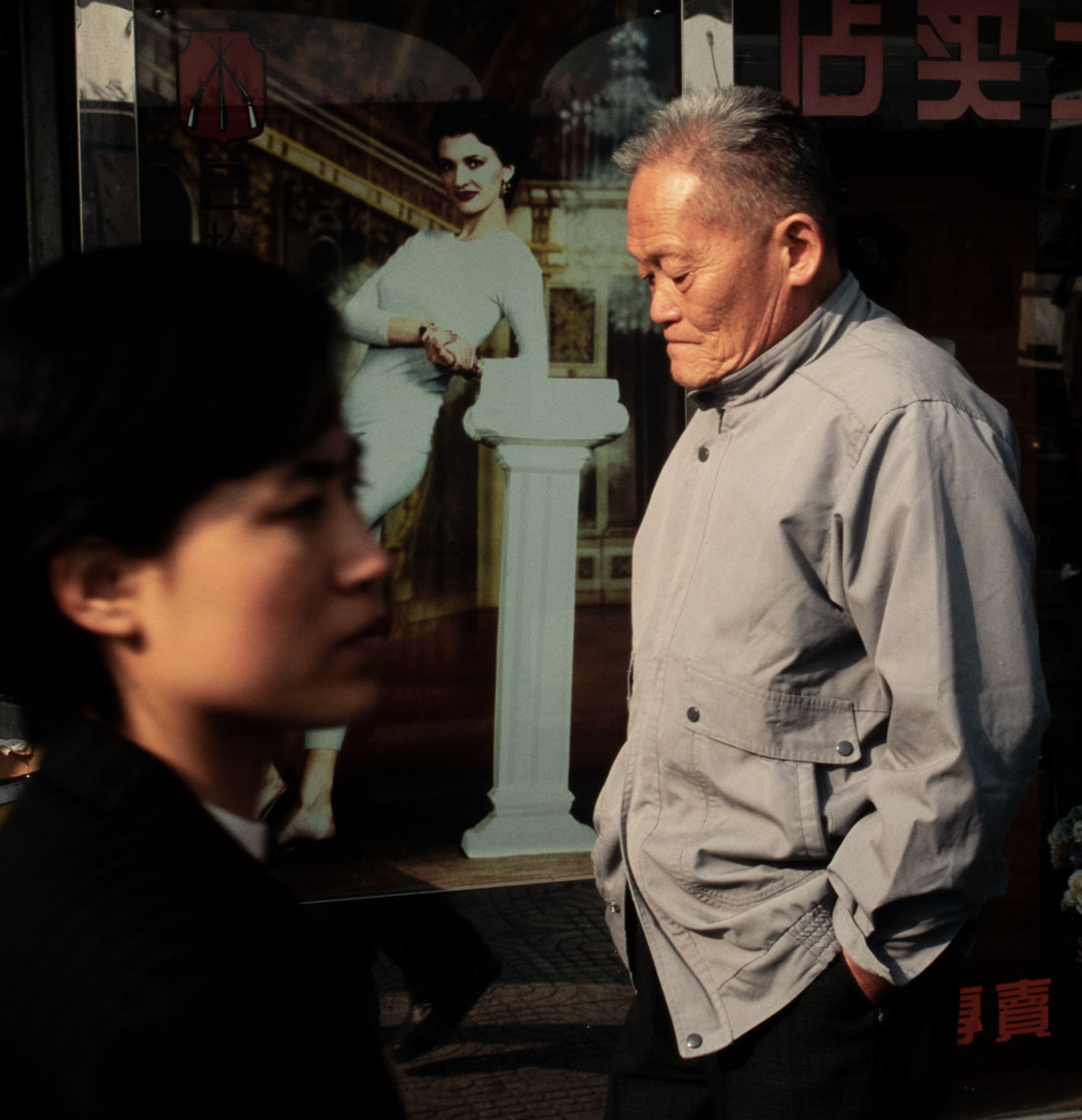
An elderly man and a young woman pass on a street in Shanghai, China. China's changing demographics reach beyond the proportion of aging to the proportion of women in the work force who are being pressured to have more children.
Marriage for many men is out of the question, anyway, because the aborting of many female babies during the one-child policy years means that China now has 24 million more men than women. The imbalance has contributed to a decrease in marriage and birth rates and is believed to be related to spikes in violent crime, trafficking, and prostitution.
Women meanwhile are outperforming men in education and increasingly in the workplace. More women than men attend universities and women are responsible for 41% of Chinese GDP–the highest proportion in the world. About seven in 10 Chinese mothers work and 80 percent of the female self-made billionaires in the world are Chinese.
Encouraging women to prioritize child bearing over career could kill or hobble this golden goose, which would further impact China’s hopes of becoming a developed economy and hurt women’s chances for equal employment. Raising the retirement age could have a dampening effect on the economy as well as adding more seniors to the workforce, because retired grandparents often provide free child care so their adult children can work.
The picture of China that could emerge is one of women who have lost gains they have made in the work marketplace and lonely men with crushing burdens of care of elderly parents and grandparents, and an economy with unsustainable debt, as China’s debt burden is three times its GDP.
Improving the quality of the labor force is one way to improve the productivity of a shrinking labor force. University enrollment has increased by seven times since 1999 in China.
An area in which China will have to make substantial improvement is its lack of hospice services and facilities.
Care of the elderly will need to expand in rural areas, where 65 percent of elderly people live below the poverty line compared with 11 percent in cities.
How well China copes with this demographic time bomb will be watched closely by a world grappling with similar if less acute challenges.
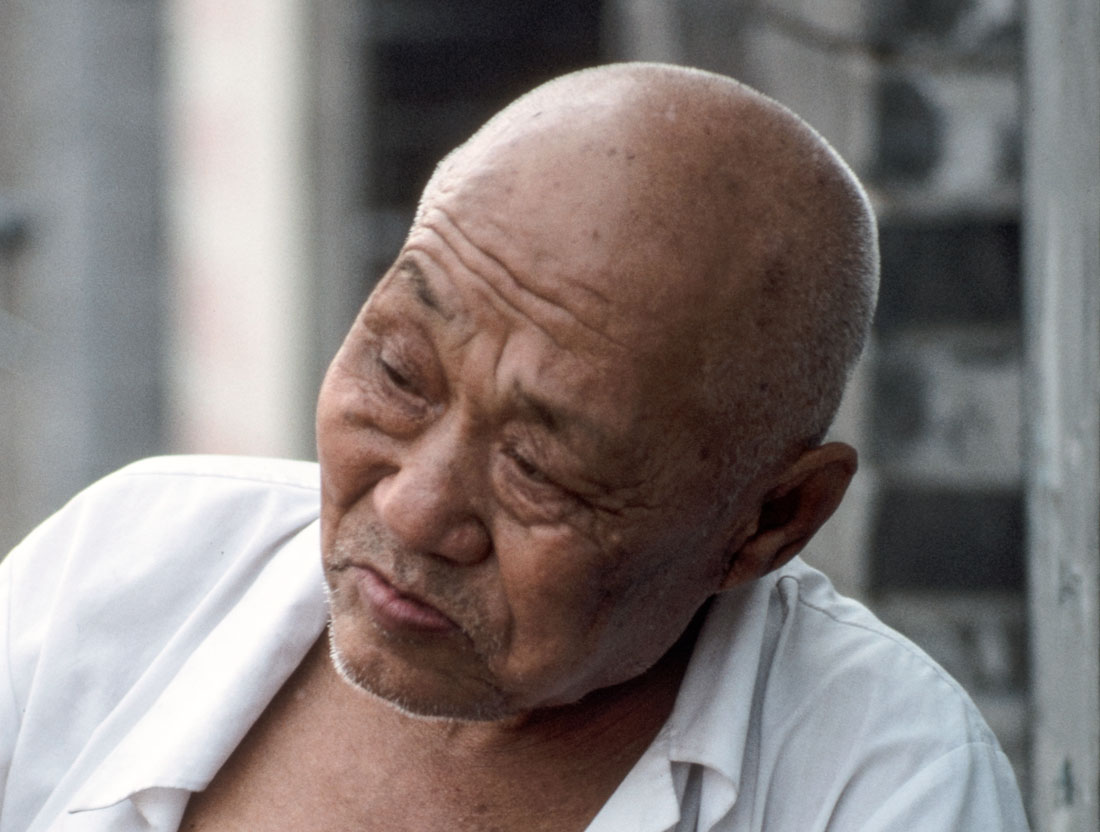
Check out these related items
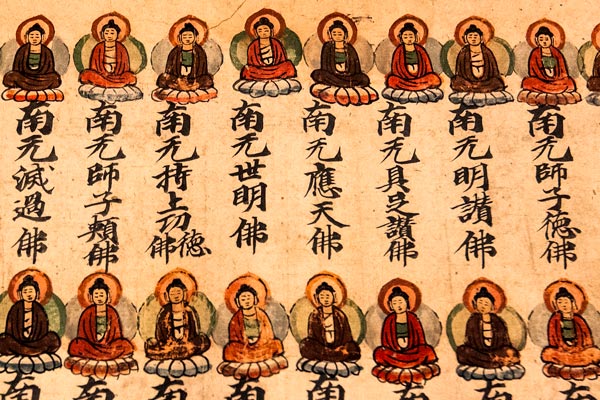
Ancient Silk Road Meets High Tech
The International Dunhuang Project digitizes old documents, caves and artifacts to enable global study of Central Asian history.
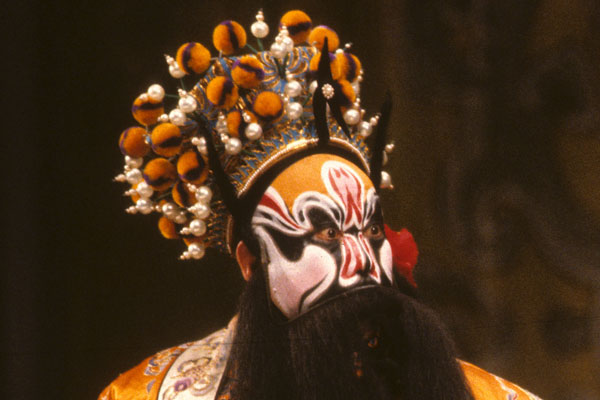
Behind the Mask: Beijing Opera’s Past and Future
Beijing opera, one of China's most iconic art forms, has struggled to survive in China even as many of its elements are being used in popular modern media.
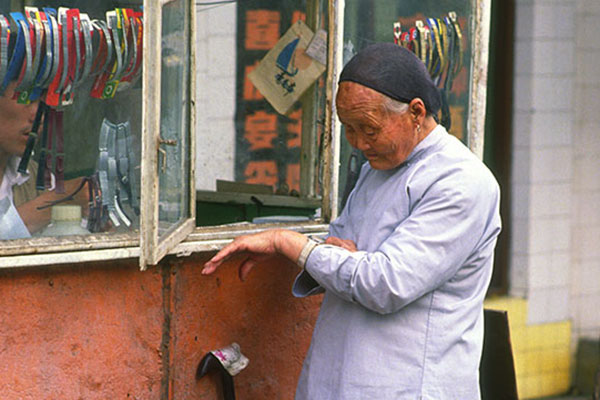
Chinese Moments Published
Chinese Moments, our photo book on China in the turbulent 1980s and 1990s, has been published as an ebook and paperback.
